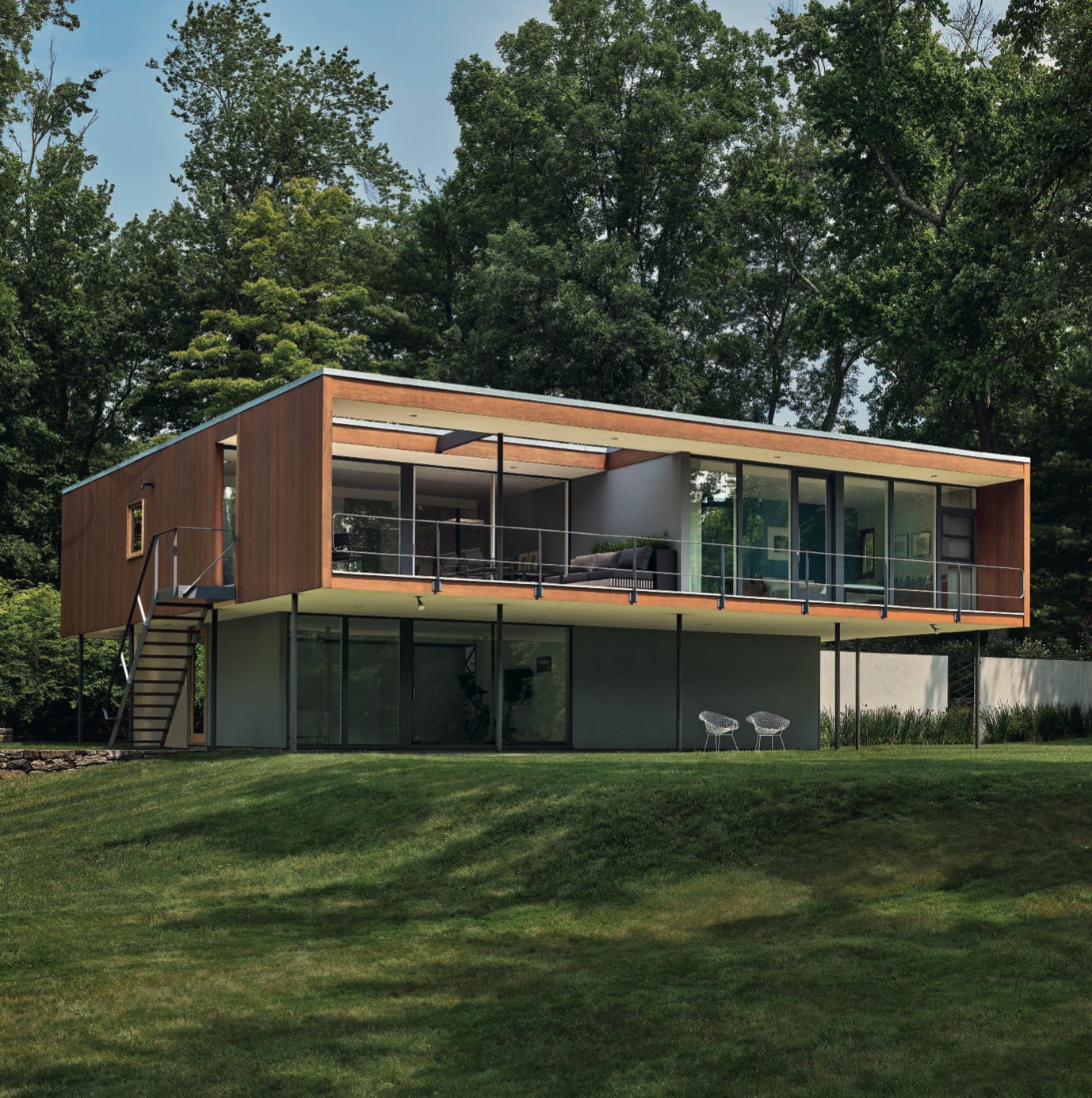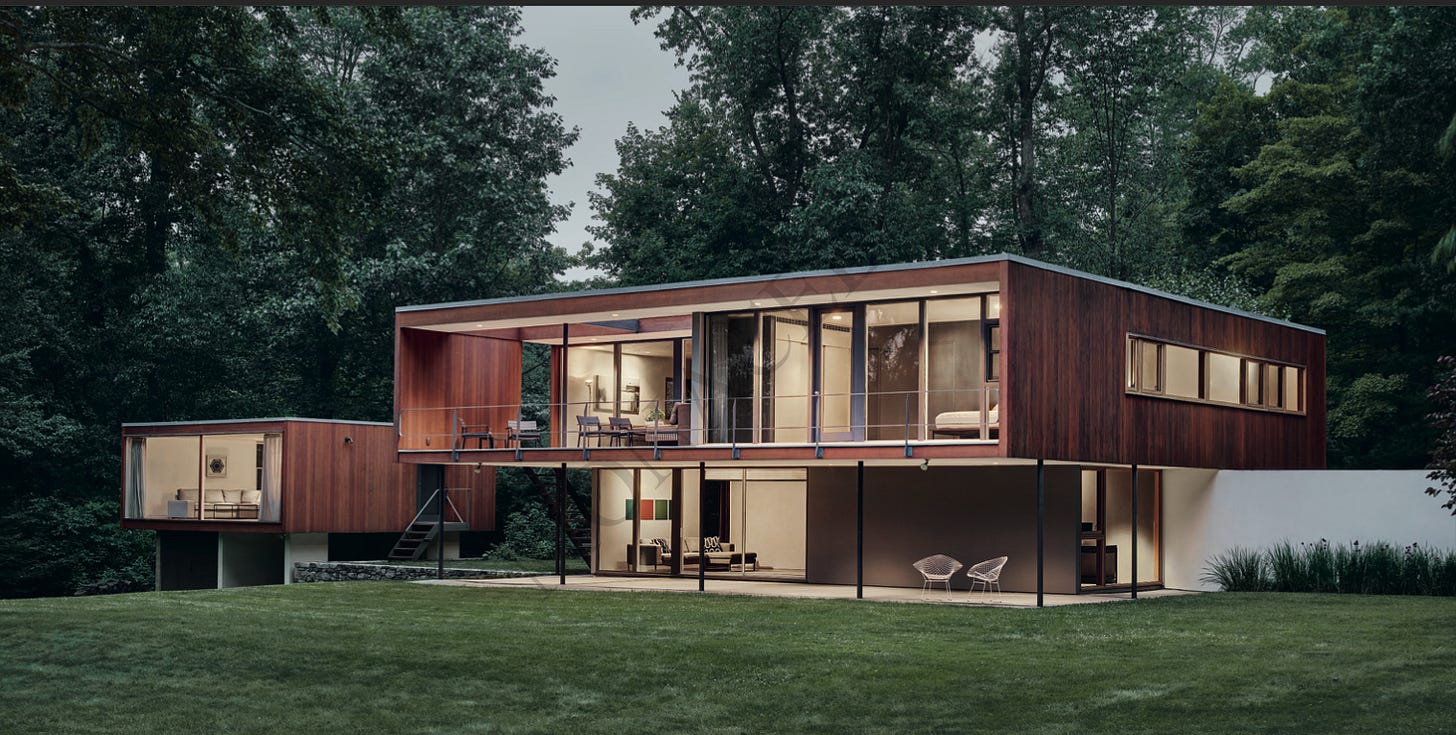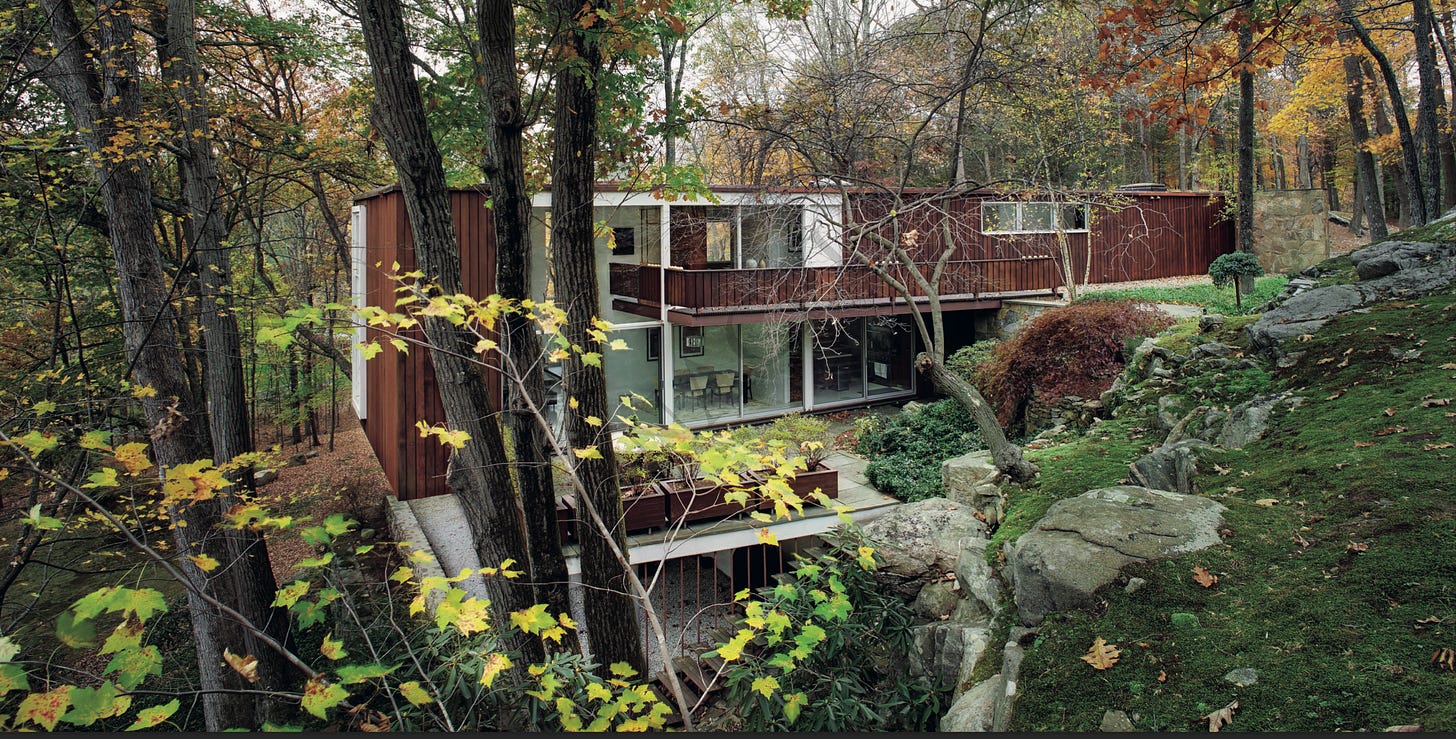Celebrating Architecture: 17 Mid-Century Houses Today
Exploring the unique Modernist enclave in New Canaan, CT
I recently had the pleasure of speaking with Christina A. Ross and Jeffrey Matz, co-authors of the book “Mid-Century Houses Today” along with Lorenzo Ottaviani.
“Mid-Century Houses Today” revisits the evolution of 17 mid-century homes in a modernist enclave in New Canaan, Connecticut. This second edition builds on the success of the first - published over 10 years ago - exploring how these homes have been adapted for contemporary living while maintaining their architectural identity.
Authored by Christina, Jeffrey and Lorenzo, all deeply connected to mid-century design, the book is a tribute to this architectural period and a resource for those passionate about preserving it.
Before diving into the interview, I’d like to ask for two minutes of your time to fill out our first Substack survey. Your feedback will help us immensely in creating stories that match your interests. Thank you in advance for your contribution!
(Marco Guagliardo - Mid-Century Home’s Editor in Chief)

Audio:
The Modernist Enclave
Christina’s journey into mid-century architecture began when she moved to New Canaan. An architect by trade, she had a general understanding of mid-century design but gained a deeper appreciation when she purchased a Philip Johnson house. “Living in one of these homes gave me an entirely new perspective on their design principles and adaptability,” she shares.
Jeff’s connection to mid-century modernism is equally personal. Growing up in a house designed by his architect father, who worked in Marcel Breuer’s office, Jeff experienced first-hand the functionality and simplicity that define these homes. “Living in that house shaped how I saw design,” he says. Years later, his curiosity about the fate of New Canaan’s mid-century homes led him to collaborate with Christina on the book.
New Canaan became a hub for modernist architecture in the 1940s and 1950s, thanks to visionaries like Philip Johnson, Eliot Noyes, and Marcel Breuer. These architects, challenged traditional colonial styles with their innovative designs.
Their homes emphasised open layouts, natural light, and seamless indoor-outdoor transitions—ideas that were revolutionary at the time.


However, these designs were not immediately embraced. “The town wasn’t welcoming to these homes. They were seen as out of place among the colonial houses,” Christina explains.
Despite initial resistance, these homes became a defining feature of New Canaan, blending harmoniously into the forested landscapes. Today, fewer than 100 of these architectural gems remain, underscoring the importance of preservation.
17 Mid-Century Houses Today
The book focuses on 17 homes that illustrate the adaptability of mid-century architecture. Christina, Jeff and Lorenzo carefully selected houses that had undergone various degrees of change. “We wanted to show how these homes could evolve while staying true to their design principles,” Christina says.
Some of the homes featured minimal updates, while others included significant additions or renovations. “Each house tells a story of adaptation and how it meets the needs of modern living,” Jeff adds.
A recurring theme in the book is the enduring relevance of mid-century design principles. Open floor plans, expansive windows, and a strong connection to the outdoors remain cornerstones of good design. “These ideas are just as important today as they were when these homes were built,” Christina observes.
Many modern homes borrow heavily from mid-century aesthetics. “It’s clear how much contemporary design owes to this era,” Jeff says.
Preserving Mid-Century Houses Today
Christina and Jeff also told us about the challenges of preserving mid-century homes. While there is a growing appreciation for their design, poorly executed renovations can diminish their original character.
Jeff explains, “There’s a fine line between updating a home for modern living and losing the essence of what makes it special.” Christina agrees on the importance of a thoughtful restoration, emphasising that these homes were designed with longevity in mind. “Their adaptability is part of their brilliance. With the right approach, they can continue to thrive,” she says.

The Preparation of The Book
One of the key goals of the book is to inspire readers to see the potential in mid-century homes. “We wanted to show that these houses aren’t just historical artefacts. They’re living spaces that can evolve and adapt,” Christina explains.
The second edition includes updated insights and new stories, offering fresh perspectives on these architectural treasures. It’s more than a collection of stories it’s a tool for education and advocacy. “We hope it encourages people to preserve and cherish these homes,” Jeff adds.
The process of creating the book involved extensive research and collaboration. The authors visited each home, spoke with homeowners, and delved into architectural archives to uncover the history and evolution of the properties.


Preservation is a central theme of “Mid-Century Houses Today”, but the authors also celebrate the creativity and innovation that goes into adapting these homes. The book highlights examples of seamless additions, contrasting expansions, and carefully considered renovations.
“It’s about finding the balance between respecting the original design and making the home work for modern life,” Christina says. “These homes represent a pivotal moment in design history,” Jeff notes. “Their impact can still be felt in contemporary architecture.”






Thank you for sharing this. I love that interior photo of the Becker house. I always find it so interesting when Bauhaus era furniture is placed in mid century homes given their discordant design philosophies. It's clear that the Wassily's are from a different time but they still work with the interior I think hahaha